10 Rules for Writing Your Next Cold Email Copy
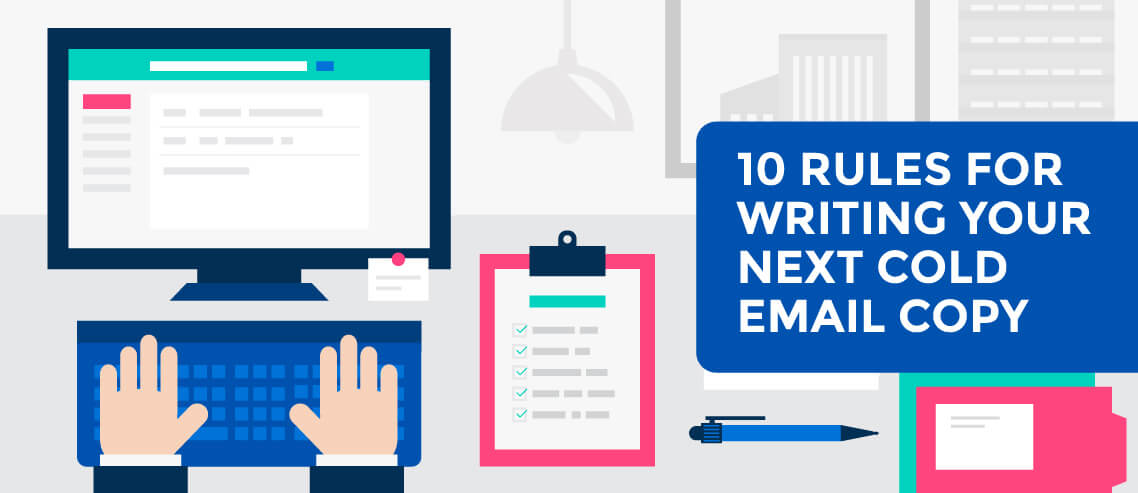
Contents
I’m a big “rule of thumb” guy. Rules of thumb are like templates; they take the thinking out of it and give you something that usually works most of the time so you can focus your brainpower on the stuff that matters.
This approach extends to cold email.
I have 10 “rules of thumb” that I always come back to when I’m sending a cold email.
Keep in mind that this is outreach I’ve done primarily for marketing and relationship-building purposes, but at the end of the day, a cold email is always a sales pitch at its most basic level, so I believe these apply to just about any type of cold email.
The overarching theme of the tips below is to be direct, no BS, concise, and well-researched.
Obviously, there’s always room for your own personality and for testing messaging, but in my experience, people prefer (and respect) when you get to the point.
I’ve organized this by elements of your cold email:
- The subject line
- The introduction
- The body
- The follow-ups and response
Let’s get started.
The subject line
I have two approaches when it comes to subject lines: ‘intrigue’ and ‘ask what you’re asking’. They are exactly what they sound like.
Intrigue
My first general approach is to use ‘intrigue’. These are very short (one – three words max) that give nothing about your ask away.
Examples of intriguing subject lines that I’ve used are:
- two things (intentionally uncapitalized)
- Interested?
The first is one my friend uses with great success, and the second consistently gets me 70%+ open rates.
I use this subject line when my ask is less beneficial to them.
For example, I sent an ‘intrigue’ subject line to content marketers asking them to participate in a survey. I did offer them credits free access to a product, but at the end of the day, I was asking them for a favor.
Spelling that out in the subject line didn’t strike me as an effective way to get them engaged, so I went with offering less information to get my foot in the door on the open.
Ask what you’re asking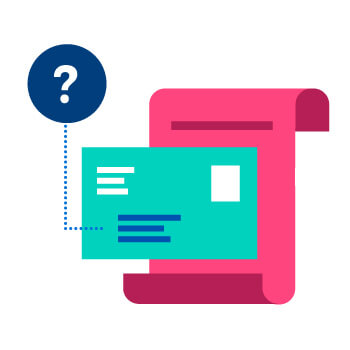
Ask what you’re asking is one I use more often, and it entails exactly what you’d expect; use your subject line to summarize what you’re asking for.
It means your subject lines end up being longer ( up to 50ish characters), but the reader knows more or less what you’re emailing about before they open your email.
An example of this approach would be:
‘Featuring {{company}} as a top sales prospecting tool’
I used this subject line for, you guessed it, an article where I was featuring the company as a top sales prospecting tool.
I use this approach when my ask is more compelling and more directly beneficial to the person on the other end. Featuring someone in a top tools article is flattering, good PR, and gets them a backlink.
I want people to know that’s what they’re getting as soon as possible, and you can’t communicate it any more clearly than in a subject line.
My open rate on that subject line, by the way, was almost 95%, and the email itself got a reply rate of 53%. The power of a compelling offer!
The introduction
This, I imagine, will rustle some jimmies. I use essentially the same first sentence in all my cold emails.
“Mark from Mailshake here!”
I’ve spent more time than I care to say agonizing over how to open my cold emails. Should I try to stir some excitement? Should I start off focusing on the recipient instead of myself?
I realized after a while that I was overthinking it. The first thing you do when you meet someone new is introduce yourself.
Even if you were trying to sell something to somebody, you wouldn’t start with your sales pitch without introducing yourself because it would sound scripted, like a presentation and less like a conversation.
Why wouldn’t you do the same over email? I get that your name and company name are in your email address, but it feels awkward (to me anyway) to not introduce yourself to someone you don’t know before jumping into your email.
That introduction is the most personable, concise way I’ve found to do it. I might follow it with something like “I manage the marketing strategy and content at Mailshake, and…” to give a little more context, but that’s it.
All that being said, you can use your introduction to add some of your own personality or flair. Whatever you’re comfortable with. But if you want something to-the-point, that’s as good a starter as any.
The Body
Make sure your email copy reads properly
If you’re reading this, I’m assuming you’re looking to send cold emails in some kind of bulk, and would make use of text replacement software (like we offer in Mailshake).
The value of text replacements when you’re sending cold emails in bulk is that it’s a scalable way to send emails that appear to be personalized and one-to-one.
That only works, though, when the text replacement keeps the sentence grammatically correct.
Take a look at this cold email:
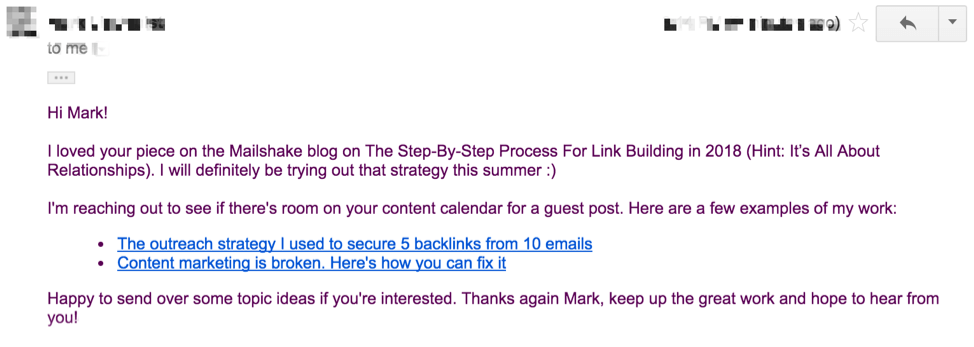
At first glance, this looks like a decent email. But take a look at the way the article title is mentioned. You would never say that sentence like that out loud; it would sound awkward. Just because it’s in an email doesn’t make it sound any less awkward.
It’s not egregious, but it jumps off the page to people who get mass cold email all the time (and many of the most valuable people you’re reaching out to do get a lot of cold emails).
The alternative takes a neutral or negative text replacement and turns it into a positive. Change a few words around to make it flow in and out of the sentence around it. Like this:
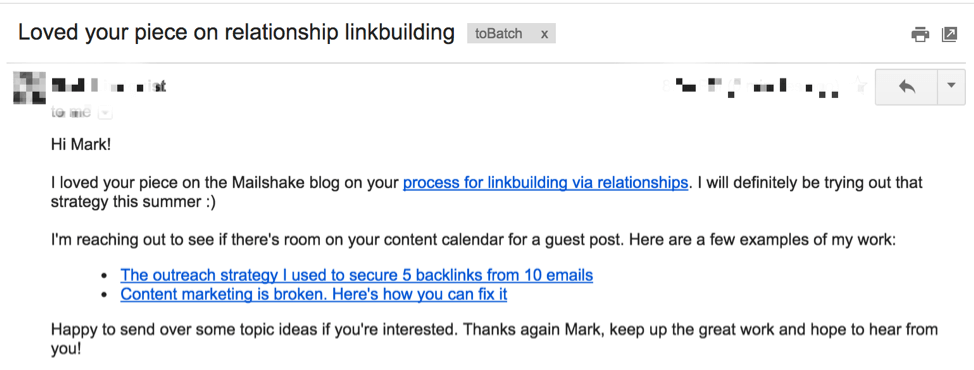
It reads better, and adds an element of personalization, because it’s clear you haven’t just pasted in the title of the article.
Add one element of personalization
The difference between an email with no personalization beyond the recipient’s name, and just one element of personalization, is huge.
It turns what appears to almost certainly be a mass email into something that at least had a little effort put into it. That little bit of perceived effort puts you ahead of 90% of the cold emailers out there.
It gives you credibility in the eyes of the recipient because you care enough to do some research, and even a little sense of flattery, since you’re suggesting that their work is worth being researched in the first place.
For me, this manifests in pulling a link to an article I like by the recipient, which I hyperlink the title of using text replacements in Mailshake (learn how to do that here).
Takes 2 minutes to check Buzzsumo for a good, popular article of theirs, and sets my email apart, if only a little.
Stylize the person’s name and company name correctly
I’ve explained this before, so I’ll just quote myself here:
“We stylize Mailshake as one word, lowercase ‘s’. It’s like this everywhere on our blog and our website. If someone reached out to me asking to contribute to ‘MailShake’ or ‘Mail Shake’, I would know they didn’t do their research and would relegate them to the trash.
The same goes for the blogs you reach out to; ‘Sales Hacker’ is two words, both capitalized. It’s not ‘Saleshacker’ anywhere.
Take the extra 5 seconds to properly stylize the blog or company names you’re reaching out to.”
The same goes for the person you’re reaching out to. The quickest way for someone to know if you’re a cold email is if you call them “Alexander” and they go by “Alex”. Generally, people will put the name they prefer to be called on their LinkedIn or Twitter. Take another 5 extra seconds and find their preferred name.
Worry more about white space and less about word count
Take a look at this email:
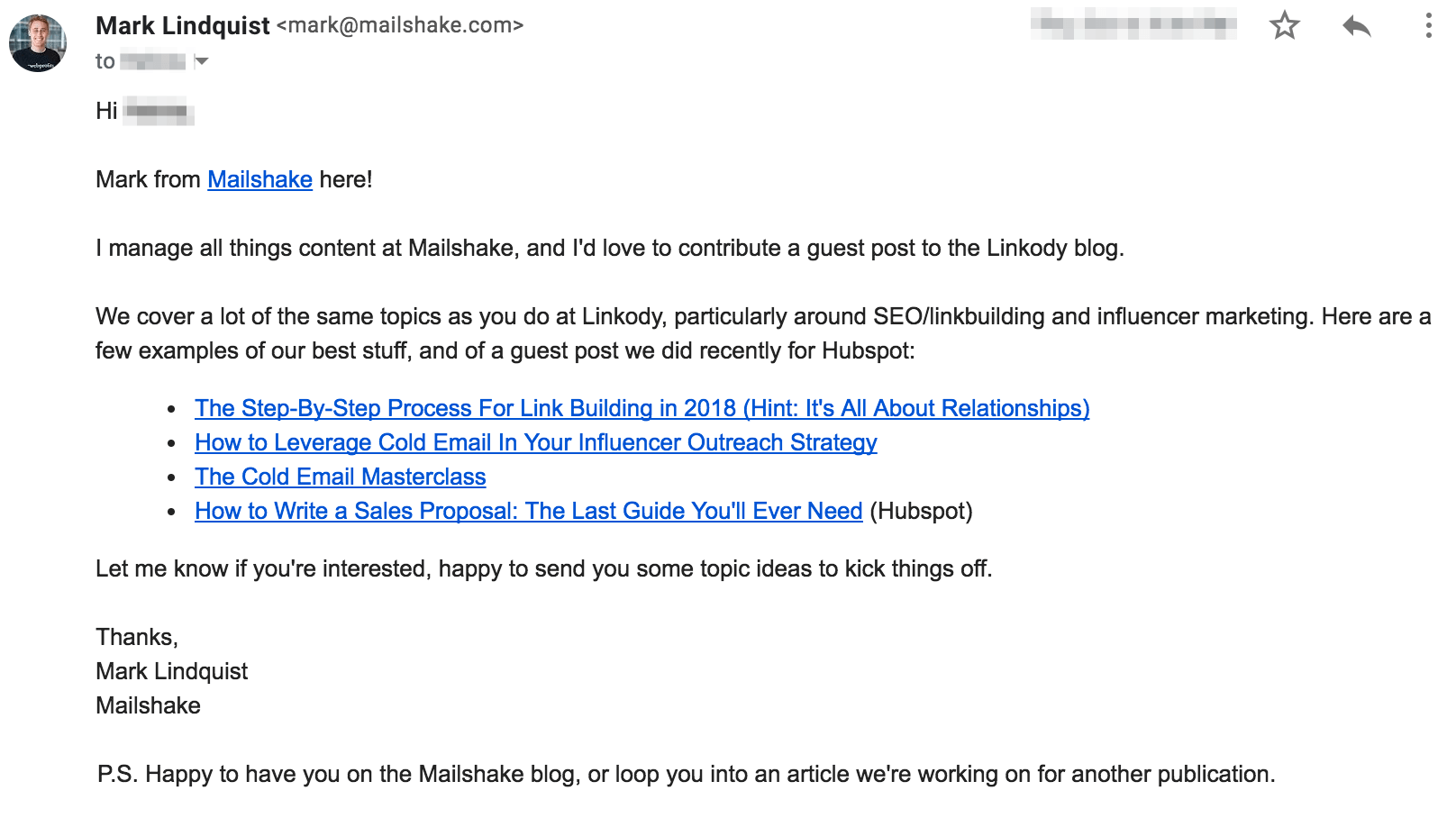
Versus this email:
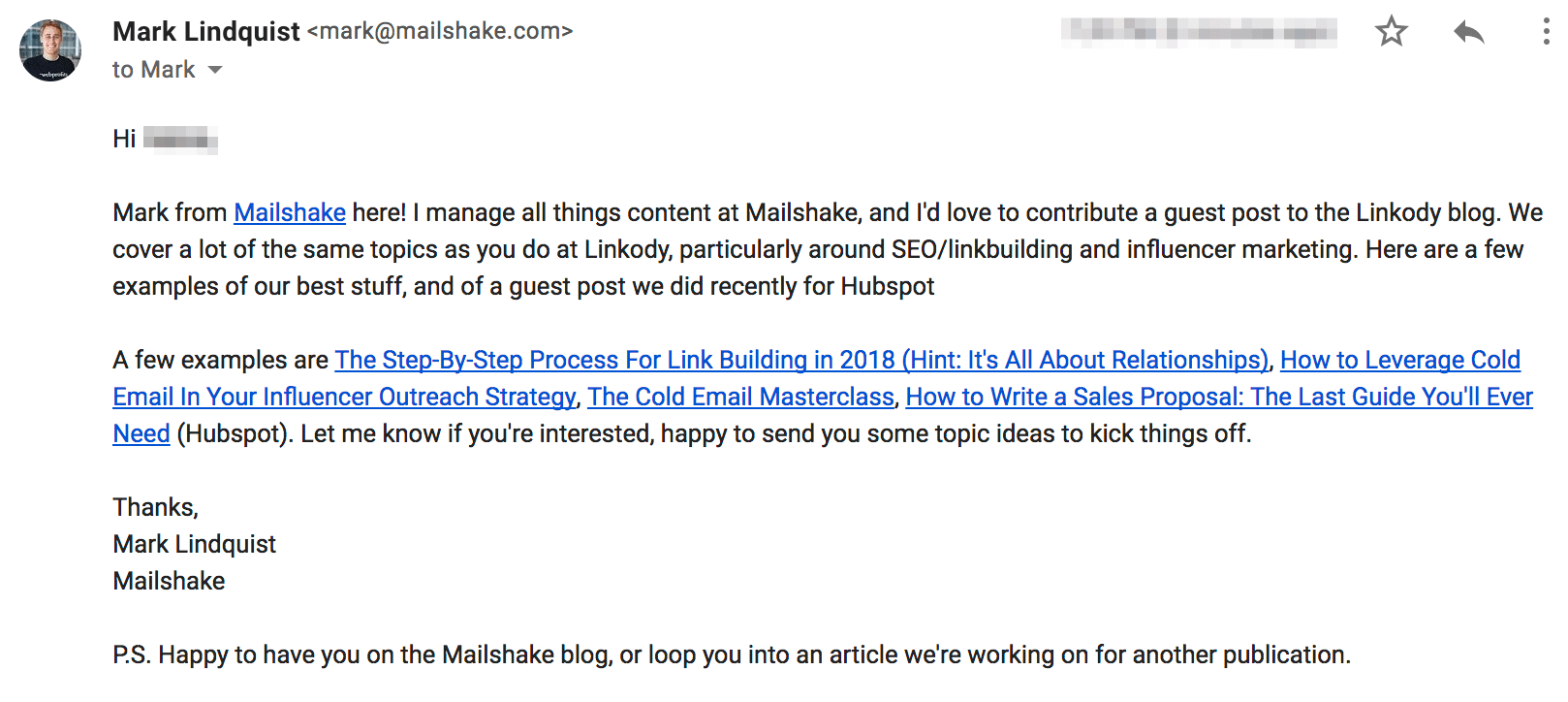
Which one appears to have more words? Which one is more readable?
Many folks I talk to are concerned about being as concise as possible in their emails. Word count and # of sentences are two primary measures by which many people judge that.
But the reason people worry about that is because shorter emails are more likely to be read because they appear more readable. And they appear more readable because there is more white space.
Take advantage of bullet points, keep paragraphs to fewer than two sentences, and focus more on white space in your next email rather than sentence or word count.
Turn link-click tracking off if you’re not using it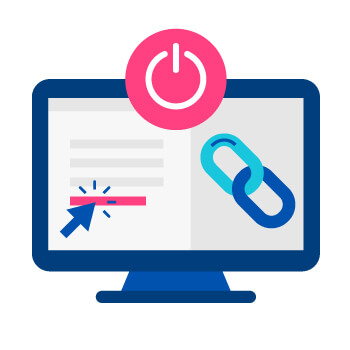
I used to keep link-click tracking on all my cold emails. Usually, knowing whether someone clicked my email wouldn’t change anything, but it was just nice to know whether or not they clicked.
There are two disadvantages to this, though:
- Deliverability might end up being lower
- People know when it’s a tracking link, and it makes the email feel less personalized.
General curiosity about how many people are clicking your link is not worth the downside of lower deliverability and perceived level of personalization.
Follow-Ups and Response
Schedule follow-ups for 2 days after and then 2 days after that
There’s a lot of talk and statistics about how long to wait between emails. Before you get lost in all that, though, think about how you answer emails from people you don’t know.
If you’re anything like me, a cold email is intriguing enough to respond to immediately, irrelevant enough to never respond to, or somewhere in the middle, where it gets lost in my inbox.
Since you don’t know which of the last two your target falls into, you can be pretty confident that you won’t get a response after 36 hours of radio silence.
That’s why I recommend keeping it simple. Set up follow-ups after 2 days, and not during weekends. It won’t come off as too pushy, and there’s no reason to wait any longer than that.
Then, set up a short 3rd follow-up for 2 days after that.
Always have a backup target
At least half the battle when it comes to connecting with someone via cold email is reaching out to the right person.
And no matter how good you are at prospecting, there’s a good chance your first target either:
- Won’t be the right person, or
- Is the right person, but is too lazy or too busy to respond to you
Either way, you should never give up the first person you reach out to doesn’t respond.
In fact, response rates on my campaigns always increase ~30% just by reaching out to one more person at a company when my first outreach fails.
Your best bet with your second outreach is to email your first contact’s boss, or the CEO if it’s a smaller company. It’s easy for bosses to forward emails down the food chain, and requests that come from above always get done.
Respond within the same day or the morning after they respond
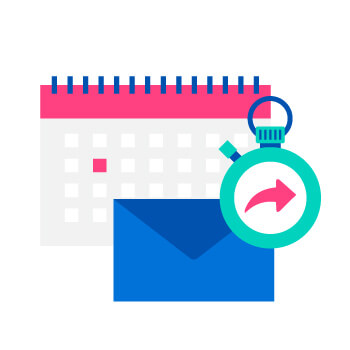
I can’t tell you the number of cold emails I’ve gotten where I respond, and the person who sent the email doesn’t respond for 24 – 48 hours. There’s no excuse for this.
Regardless of what you’re reaching out for, you need to strike while the iron is hot. Always respond either the same day, or the morning after, you send a cold email campaign.
Conclusion
Like I said in the intro, these are rules of thumb that have worked for me. However, these don’t all follow conventional wisdom, and I’m sure your mileage has and will vary.





